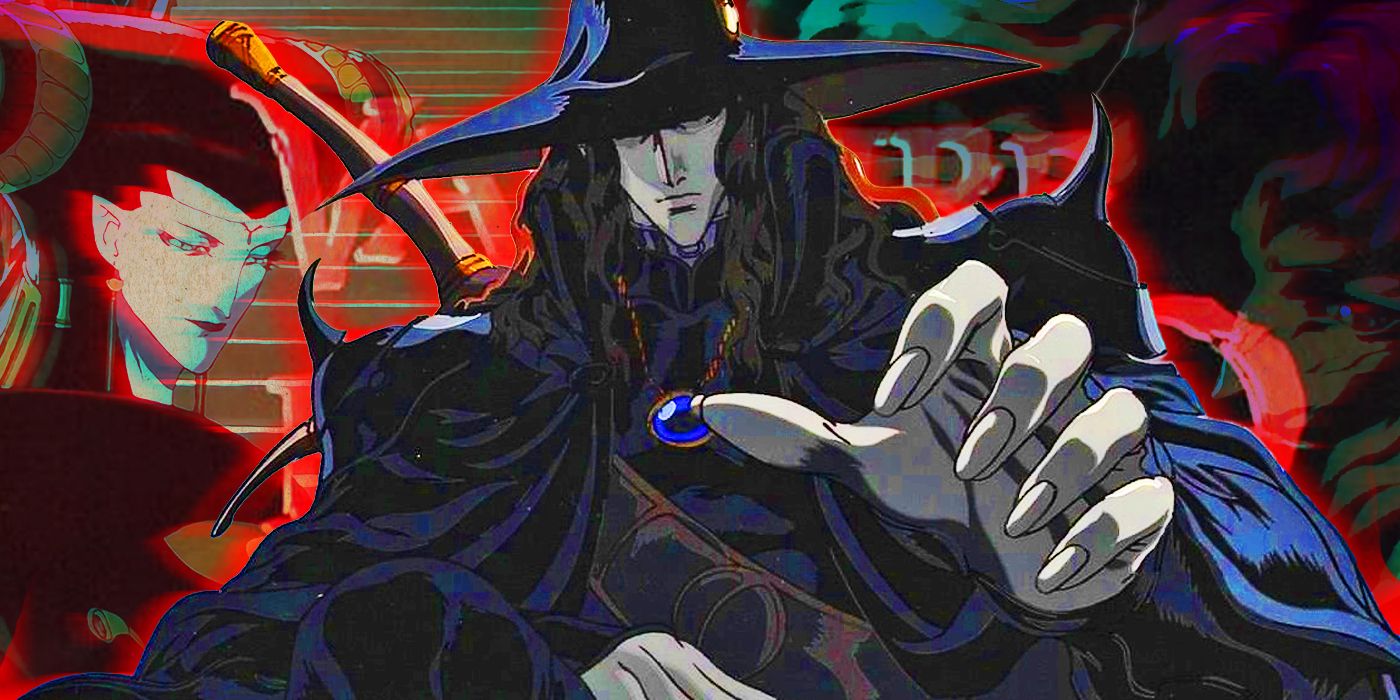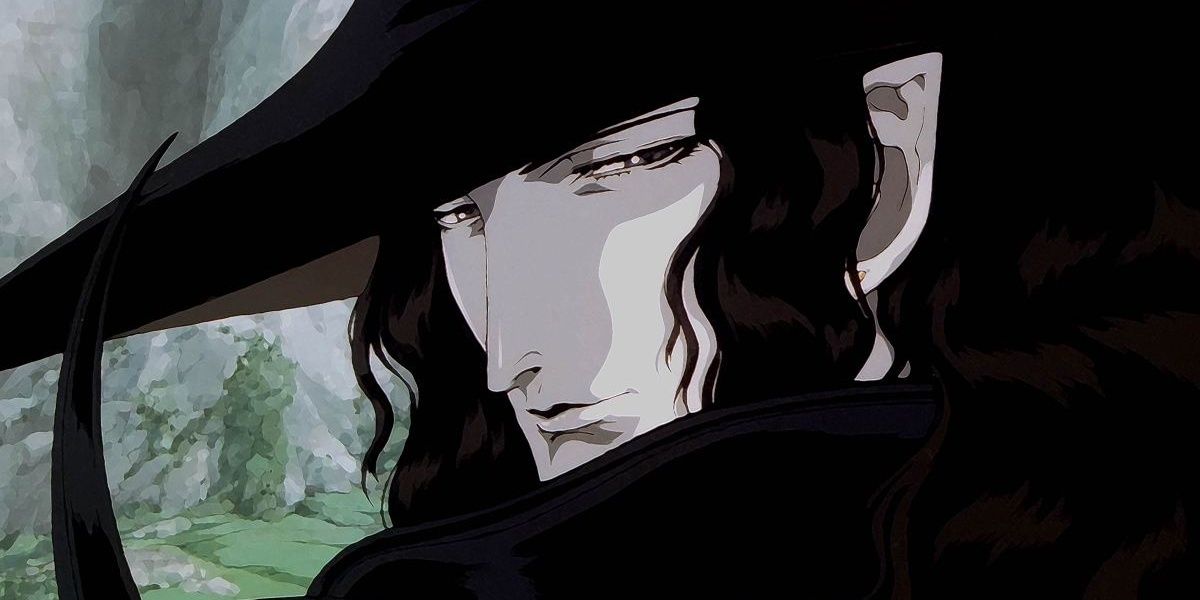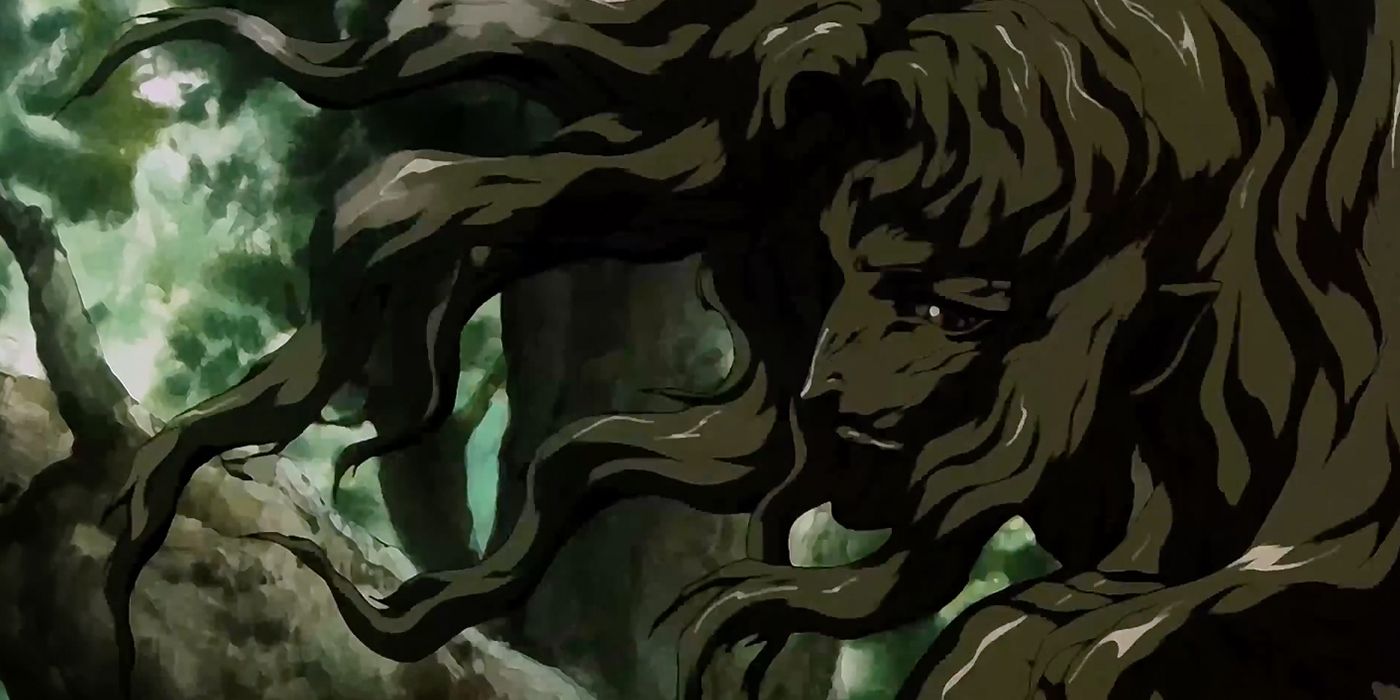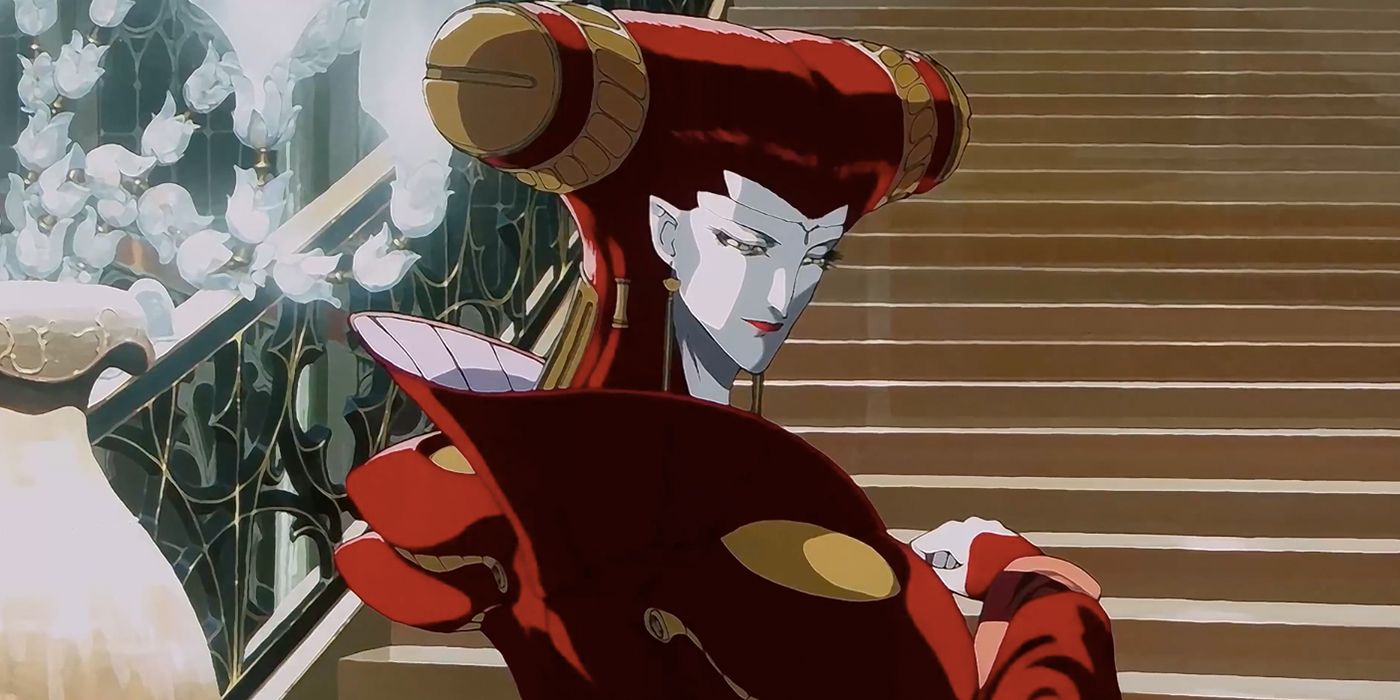Vampire Hunter D: Bloodlust, released in 2000, is a high-water mark for anime film design. Written, directed and storyboarded by Yoshiaki Kawajiri of Ninja Scroll fame, it is the second anime adaptation of the light novel series written by Hideyuki Kikuchi and illustrated by Yoshitaka Amano. The long-running source material offers tons of lore and material to draw on, but what makes Bloodlust so remarkable is how it communicates all this information visually rather than didactically. The film uses an incredibly powerful visual style to present several completely distinct cultures.
Vampire Hunter D takes place over 10,000 years after a nuclear war. Vampires, known as Nobles, survived in bunkers, and remade the world to their own dark preferences, engineering magical creatures and mutants while enslaving humanity. However, the Nobles reached their peak and inevitably fell, and now humans are bouncing back with the help of Vampire Hunters, who take it on themselves to fight the remaining Nobles. One such Vampire Hunter is the hero of the story, D, a Half-Vampire Dhampir with a giant sword, a cool hat and a parasitic face living in the palm of his hand. D is a tortured Byronic hero who travels around killing Vampires and various other monsters
Needless to say, there's a lot going on here, and the film doesn't waste screen time bombarding us with exposition. Bloodlust introduces four distinct cultures: the everyday humans, the vampire Nobles, the human Vampire Hunters and the monstrous Barbaroi. D does not fit squarely into any of these categories, drawing influence from all of them but belonging to none.
If the design of the Nobles evokes old-world Europe, the humans are much more rooted in the American Old West. They are shown living in sun-drenched, arid spaces, and practically all of their scenes take place in the day. Their villages are humble and quaint, and they seem much more interested in just getting by than in getting caught up in any grand supernatural machinations. They have guns and technology, but it's nothing to write home about. It's clear that they are simply trying to survive and come back from the millennia of darkness.
The Vampire Hunters shown in the film, the Marcus brothers, have a much more futuristic style. These bounty hunters have flamboyant outfits and a hulking tank straight out of Mad Max. They use a mixture of medieval weapons (crossbows, blades, hammers) and bizarre future technology (one memorable sequence has Grove, a disabled psychic, hooked up to an IV that allows him to astral project and rampage through enemies). As futuristic as some of their technology may be, however, it's clear they're still struggling to get by, just like the other ordinary humans.
The monsters D and the Marcus brothers run up against throughout most of the film are the Barbaroi. The Barbaroi emphasize the fact that this is an Earth that exists post-nuclear war, and also show us just how long it's been since said nuclear war. The Barbaroi are mutants, with monstrous abilities such as shadow travel, shapeshifting and lycanthropy. They have evolved over the millennia into these forms, and are about as far from human as you can get. They have developed their own culture and traditions, though it's worth noting that this culture exists primarily in oral tradition rather than architecture or art. They're much more driven to destroy than to create.
The most fun aspect of Bloodlust's world-building is the gothic architecture and art style of Noble culture. The Nobles still have incredible monuments to their fallen civilization, including spaceships and a giant, sprawling castle. What makes this so fun is that everything, including their futuristic technology, is depicted in a dramatic, Gothic style. This evokes such classic vampire tales like Dracula and Carmilla, but those works were written in the 19th century, so why exactly are the Nobles still embracing this now-dated style thousands of years later?
There's no real logical reason for the Nobles embracing Gothic Medieval/Romantic style, so we must assume that their love of this design stems from an important cultural moment. The Founding Fathers of the United States built architecture inspired by ancient Greece and Rome, hoping to embody their democratic ideals and cultural sophistication. The vampires are likely doing something similar. Though it's not mentioned in the movie, the Vampire Hunter D books make it fairly clear that the Nobles have a King -- Dracula. He is a figure of immense importance to their culture, so it makes sense that they would model themselves after him. The nobles are trying to evoke a bygone age, one reminiscent of an important time in the life of their greatest cultural hero.
D himself blends the strengths of all these cultures. D has the appearance of a Noble, with unearthly beauty and incredible agility and strength. His outfit is somewhere between the Vampires and their hunters -- he wears a broad hat and cape and fights with a sword, but he also sports a leather bodysuit reminiscent of the Marcus brothers. Finally, his parasitic hand is not just his only friend, but very reminiscent of the Barbaroi. D has pieces of every culture, and yet he's welcome in none.
Vampire Hunter D: Bloodlust has memorable characters, fun twists and turns, and truly excellent animation and direction, but its greatest strength is its visual worldbuilding. The film presents a view into a fully realized world, one where humans and Nobles simply wish to live their lives free of machination, and where one Dhampir wanders forever alone. Take a look if you haven't yet, and if you're already a fan, well, maybe it's time for a re-watch.




